
2012 International Aluminum Extrusion Design Competition
Student Class Winning Entries

1st Place: Medstretch by Jeffrey Fleming from Purdue University
2nd Place and Hydro Sustainability Award Honorable Mention: Urban Herb by Robert George from Aston University
3rd Place: Aqualum by Maggie Rider from Purdue University
3rd Place: Extruded Spiral Staircase by Rokhaya Mourtalla Ka from Northern Virginia Commnuity College
Honorable Mention: Med+ Medical Shelter by Brandon Trostrud from Purdue University
Honorable Mention: Plant Tower by Lisa Charpentier from Dawson College
Hydro Sustainable Design Award Winner: YAK Wind Powered Street Lighting System by Stefah Marjanovic from the Faculty of Art and Design — Megatrend

Cash awards and scholarships for the 2012 Aluminum Extrusion Design Competition sponsored by Hydro Aluminum North America, Inc.
*Click on the thumbnail of each image to be taken to the larger, higher-resolution image*
1st Place: Medstretch by Jeffrey Fleming from Purdue University
The First Place award winner of a $3,000 scholarship in the Student Competition was Jeffrey Fleming of Purdue University in West Lafayette, Indiana. Fleming submitted the MedStretch, an extruded aluminum stretcher designed to transport injury victims.
The MedStretch extruded aluminum stretcher is lightweight and mobile for transporting injury victims. The compact stretcher design unfolds, sets up quickly and stores easily. Most of the stretcher's 25 components are extruded aluminum, with four, six-and-a-half-foot extruded parts making up the main stretcher frame. Aluminum alloy 6063 was chosen for its structural strength and corrosion resistance, especially when used in a swimming pool environment where sun and harsh chemicals can corrode typical stretchers.
Mr. Fleming's design concept utilizes the strength-to-weight capabilities, profile design flexibility and other inherent advantages of the extrusion process in a creative manner to envision a useful, efficient means to transport injury victims. His design incorporates features to improve the unit's function and his choice of extrusions ensures a clean, aesthetic solution," said competition judge Craig Werner.
 |
 |
2nd Place and Hydro Sustainability Award Honorable Mention: Urban Herb by Robert George from Aston University
Second Place was awarded to Robert George of Aston University, England, who received a $2,000 scholarship. George designed the "Urban Herb", a self-watering balcony garden that allows the growing of herbs and small container plants in a compact tray. The unit is low-maintenance, corrosion-resistant and a reliable gardening solution via the unit's hydroponic watering system, which monitors water levels through a semi-transparent side cap.
The Urban Herb also won an Honorable Mention for the Hydro Aluminum Sustainability Award. His concept makes good use of the corrosion resistance of aluminum and fully exploits extrusion's design flexibility to produce functional channels in the product", commented judge Richard Dickson, Hydro Aluminum's Director of Customer Technical Support, Metal Markets North America. His design would need a little work to optimize extrudability, but is close to being able to be manufactured." It scored well on sustainability as it allows the growth of fresh produce in cities, giving access to fresh herbs/vegetables while reducing the transportation CO2 footprint.
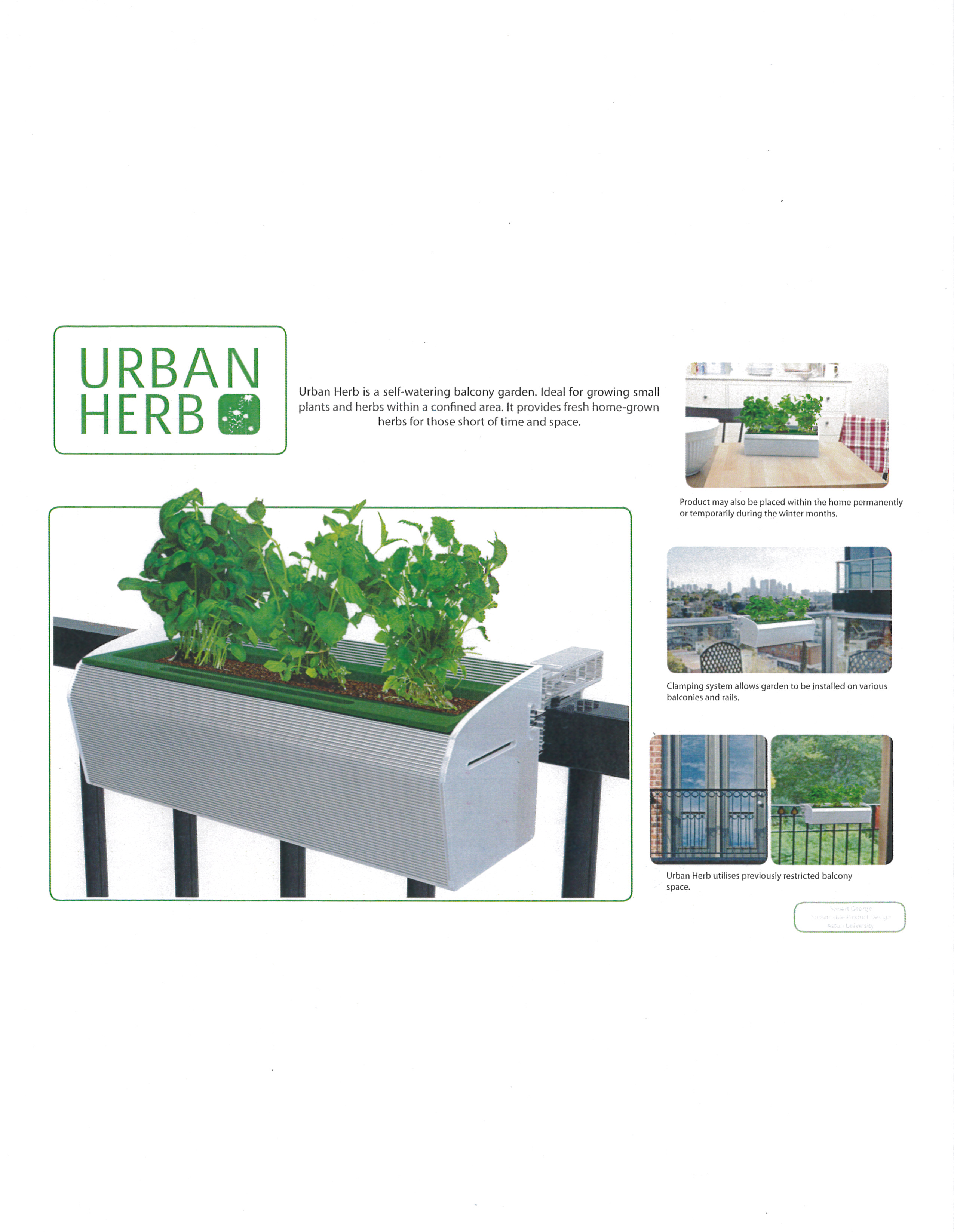 |
 |
3rd Place:
Aqualum by Maggie Rider from Purdue University
Extruded Spiral Staircase by Rokhaya Mourtalla Ka from Northern Virginia Community College
Two students tied for third place, and both winners received a $1,000 scholarship prize.
Maggie Rider of Purdue University won for her design, "Aqualum", a two-in-one aquarium filtration/heating system. Aluminum extrusion is ideal for this aquarium due to its corrosion resistance, heat conductivity, and precision manufacturing capability. The aquarium filter/heater is an aluminum extruded design that cycles water by waking it from the sides, and then pushes the water upwards by the electrically magnetized propeller built into the base of the frame. Water is then moved through and filtered from poor ammonia and bacteria molecules. As water is released back into the aquarium, coils located beneath the overhang heat and regulate the water temperature for the entire aquarium.
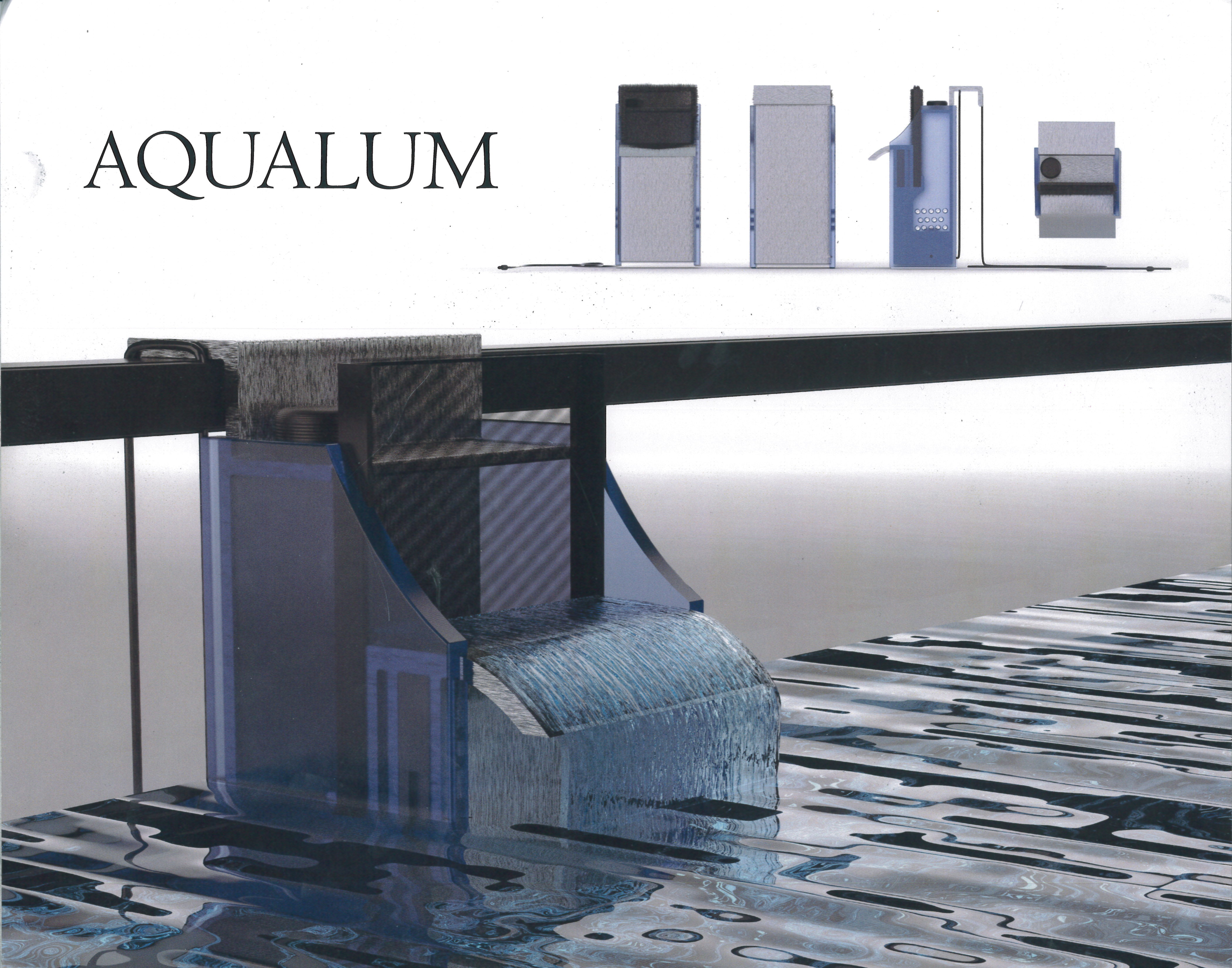 |
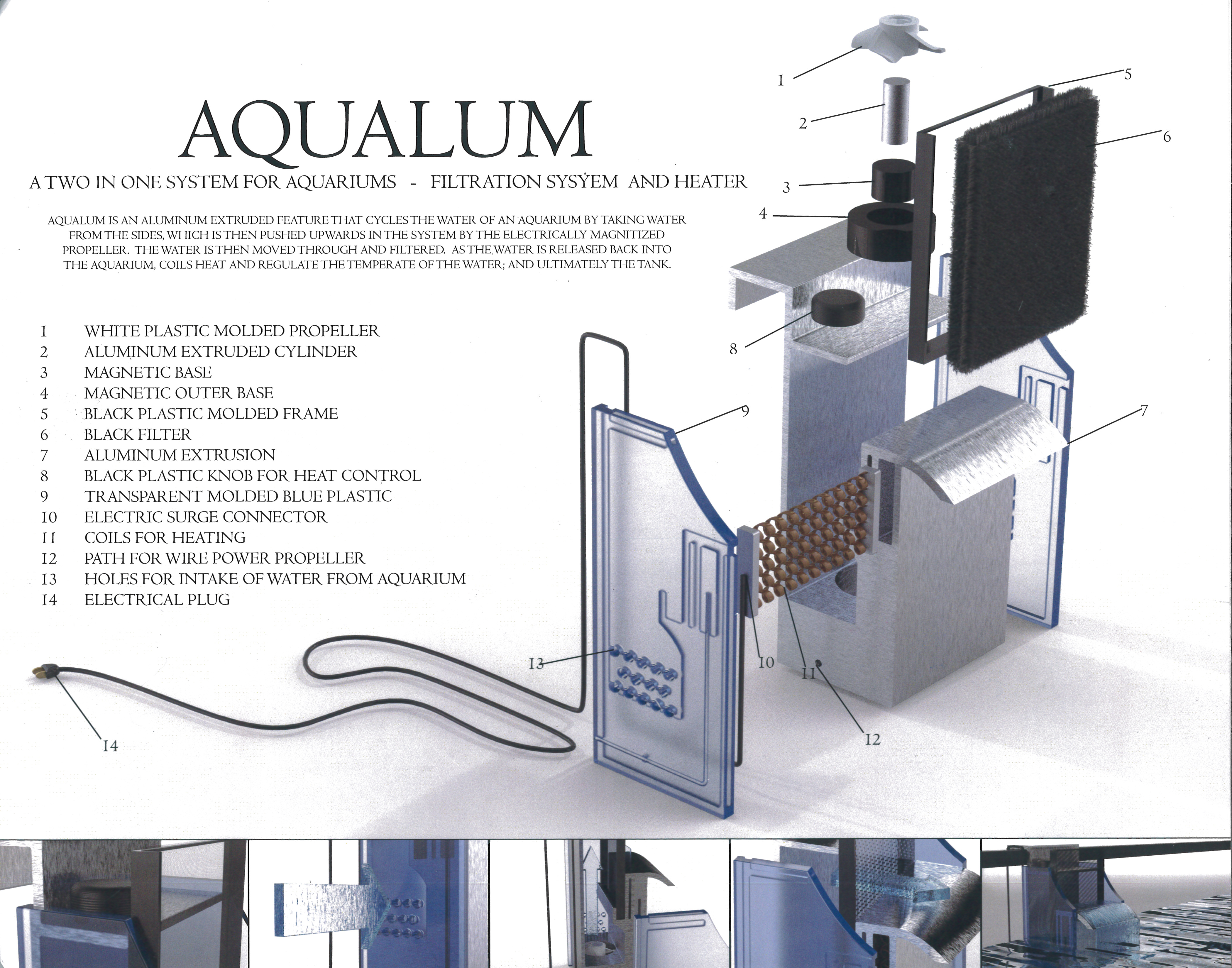 |
The other Third Place winner was Rokhaya Mourtalla Ka of Northern Virginia Community College in Virginia. Her "Extruded Spiral Staircase" design consists of an extruded aluminum spine and spacers, and wooden stair steps. The spiral composite staircase and wooden stairs are supported by extruded aluminum spacers for a contemporary look. Aluminum was chosen because the spacers can achieve a high-polished finish that complements the stair steps. The spine is not visible, and has multiple radial keys" to orient and hold the spacers. Aluminum extrusion was ideal for creating these unique shapes with radial key fittings. All extrusions are designated to be formed from high recycled content aluminum.
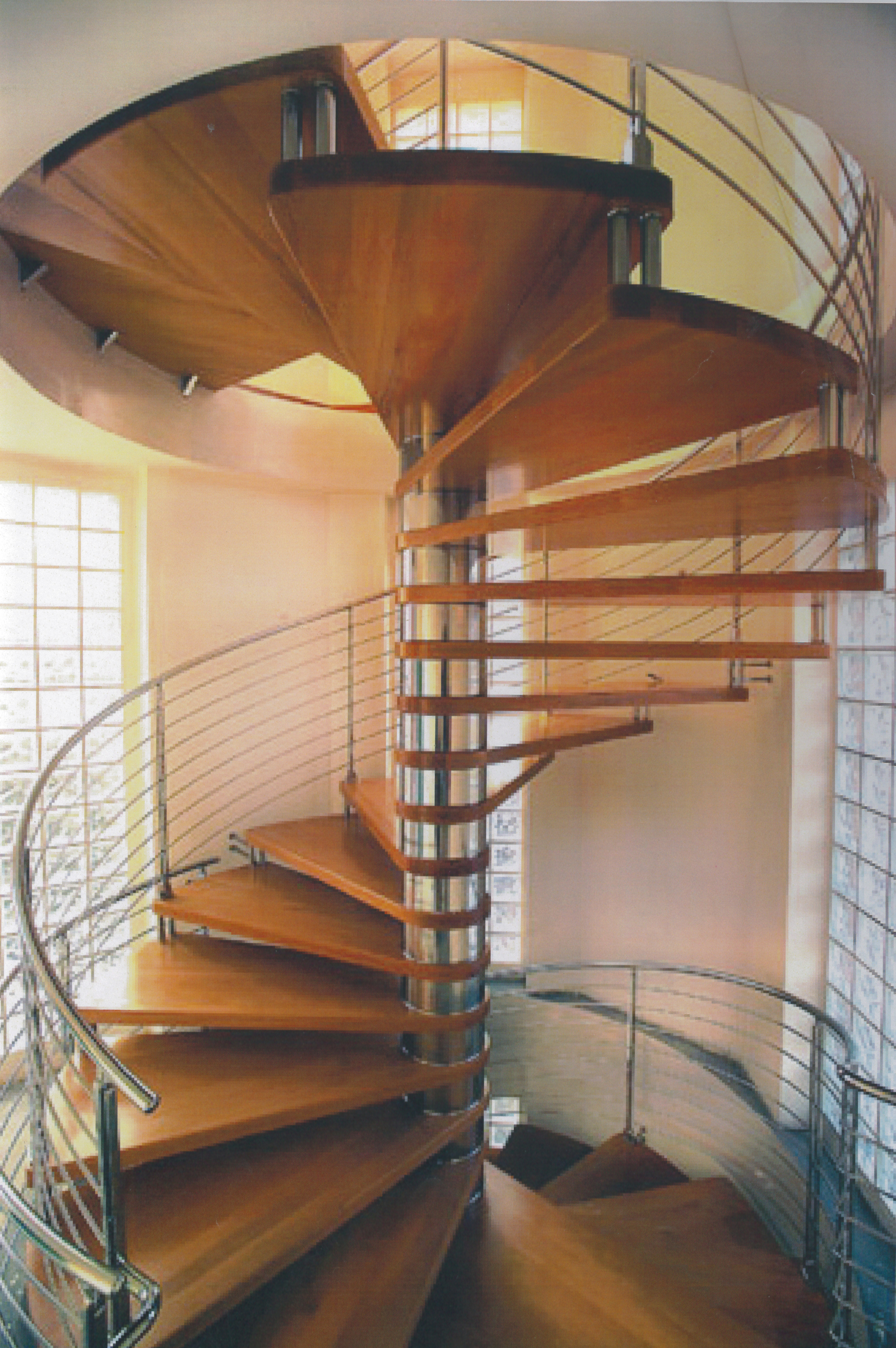 |
Honorable Mention:
Med+ Medical Shelter by Brandon Trostrud from Purdue University
Plant Tower by Lisa Charpentier from Dawson College
The Student Competition also yielded two Honorable Mentions. Brandon Trostrud of Purdue University received recognition for his "Med+" medical shelter.
The Med+ shelter expands/improves medical services by providing doctors with a base camp for remote areas or harsh climates. The lightweight structure is made of aluminum extrusions, fabric and plywood, and height adjustable for use in flooded areas or on uneven ground. Double-layer extruded aluminum walls provide thermal protection against extreme heat/cold. The structure breaks down into 8-foot sections that may be moved in bundles, assembling in rows of three cubes that connect to the desired size.
 |
 |
The second Honorable Mention winner was Lisa Charpentier of Dawson College in Canada. The "Plant Tower" is a space-saving option for plant and herb growing in the home. Its tree-like structure is created with interlocking extruded aluminum profiles that are designed to stack several pots vertically without affecting plant growth within the pots. Extra parts may potentially be added to the assembly to allow more plants to grow in the same minimal footprint. The profile of the pot holding the bracket may be easily assembled without screws, and pots may be repositioned without affecting assembly stability. A retractable handle makes the structure mobile for maximum sun exposure. The tower is also packaged in a compact, ready-to-assemble state.
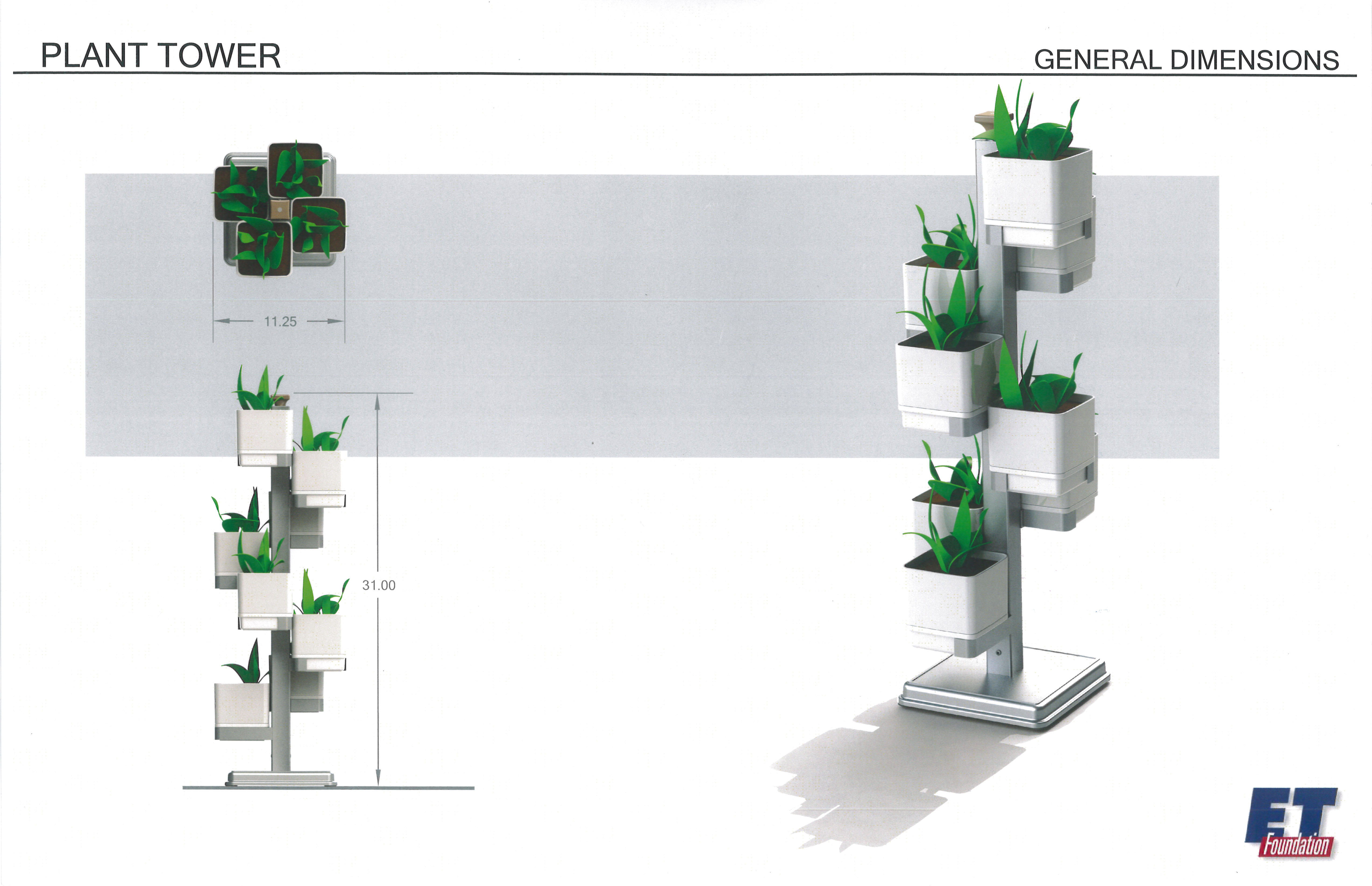 |
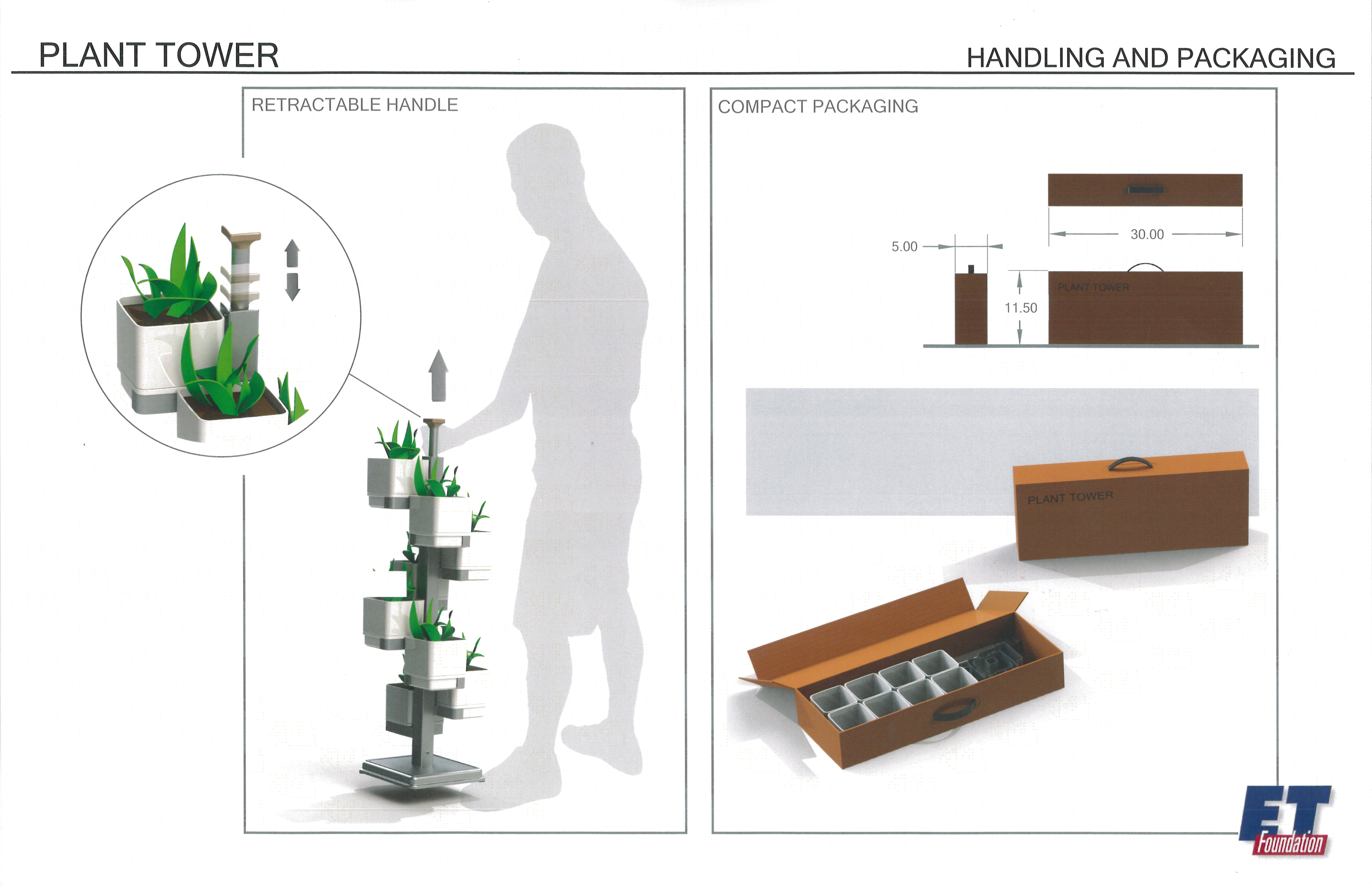 |
Hydro Sustainable Design Award Winner: Yak Wind Powered Street Lighting System by Stefah Marjanovic from the Faculty of Art and Design — Megatrend
The Sustainable Design award is an effort by Hydro Aluminum to foster innovative solutions to growing societal and/or environmental issues.
"Among the entries this year, there was one that was both original and innovative in its design, and effectively addressed sustainability issues," commented Richard Dickson, Hydro Aluminum's Director of Customer Technical Support, Metal Markets North America. Hydro chose the YAK Wind Powered Street Lighting System submitted by Stefah Marjanovic, from the Faculty of Art and Design – Megatrend, Belgrade, Serbia as this year's Hydro Sustainability Award winner. The winner will receive a $2,500 scholarship award.
The YAK street lighting structure is designed to be harmonious with nature, and to be a sustainable solution for creating light using natural constant energies and new LED technology to further reduce power consumption. The outdoor light features "wings" and a base for the wings all made from extruded aluminum. The cover and carrier for the LED lamp are also made of aluminum extrusions. The light contains a small generator in the upper tube section, with batteries located in the bottom. The rotational wings" are made up of several small parts to better utilize varying wind currents. The YAK's ideal installation location is along river banks and coastlines, due to constant wind flow.
His design scored very high on sustainability, using renewable resources to provide street lighting. It could be used in areas of the world where access to main electricity is limited. The judges were impressed by the thoroughness of the preparation and the quality of the presentation.
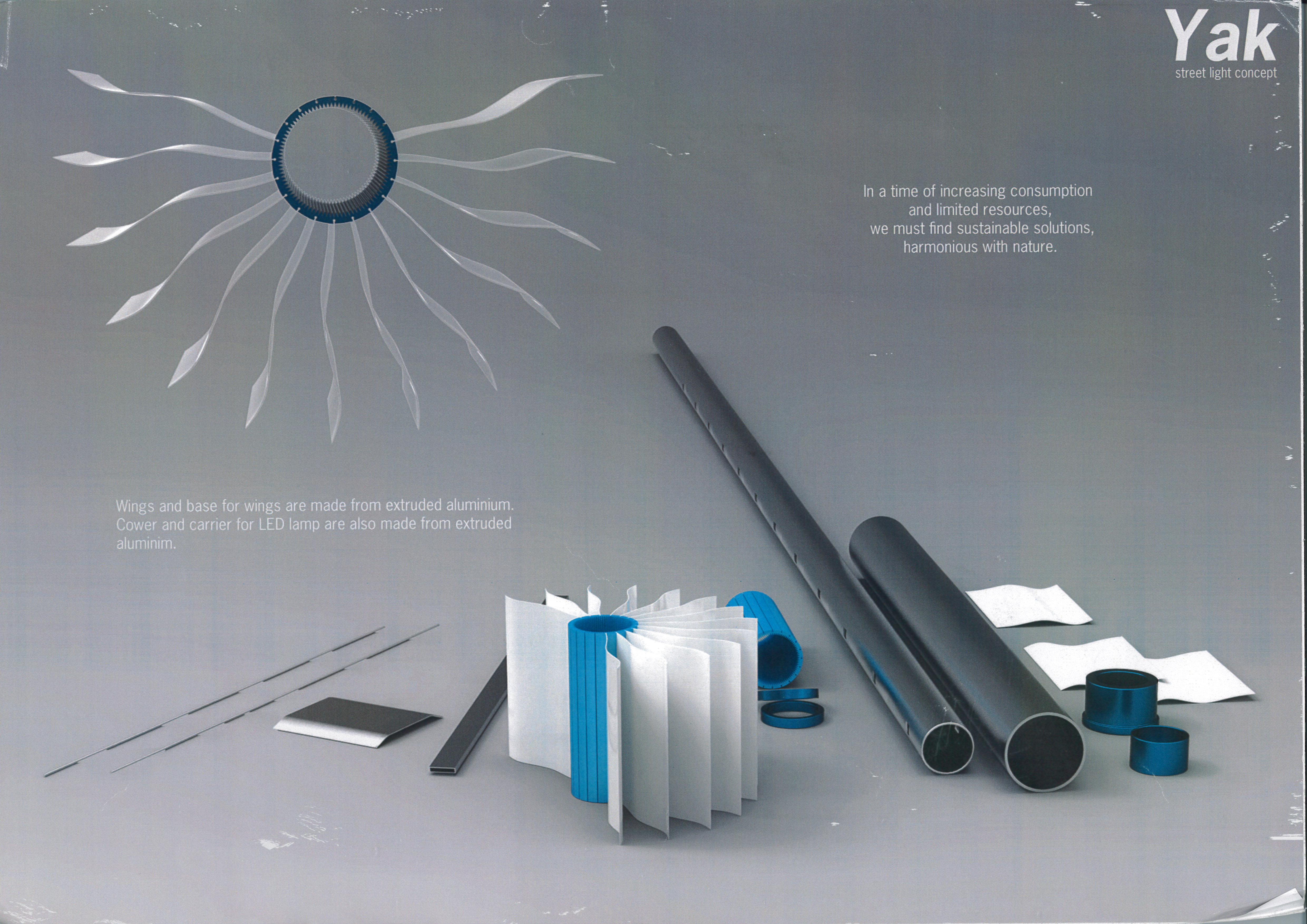 |
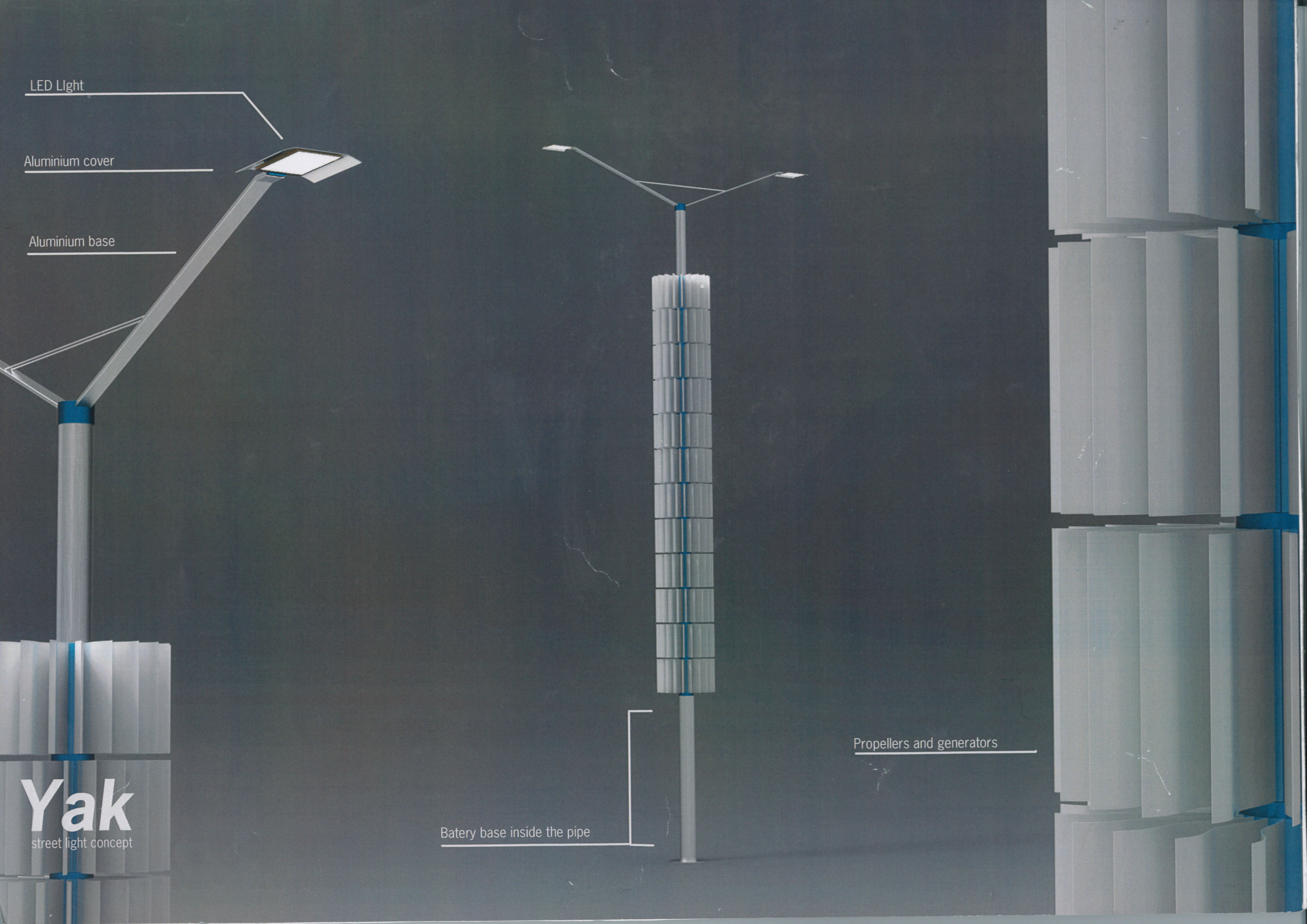 |
 -
-




 |
|